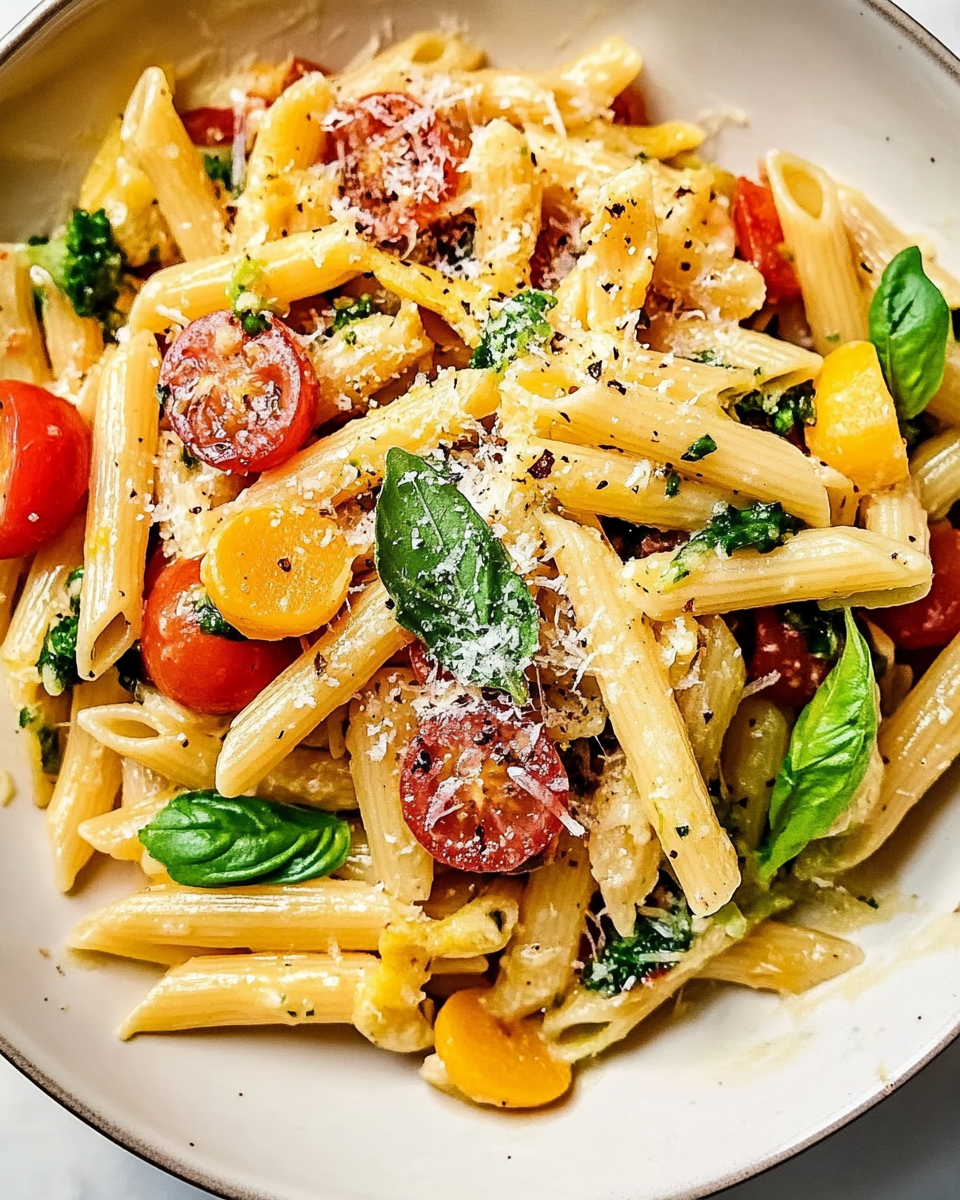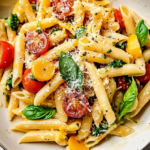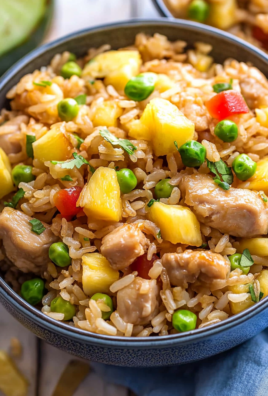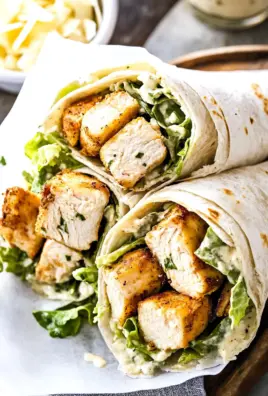Pasta Primavera is a vibrant, creamy, and satisfying dish that showcases the beauty of fresh vegetables in a comforting pasta bowl. While it’s often associated with spring, this recipe is delicious all year round. The combination of sautéed vegetables and tender pasta tossed in a rich Parmesan-butter sauce creates a perfect harmony of texture and flavor. Whether you’re looking for a meatless main or a light yet filling meal, this dish is a go-to option.
Unlike heavier pasta dishes, Pasta Primavera lets seasonal produce take center stage. With a mix of carrots, zucchini, yellow squash, and both sun-dried and cherry tomatoes, the colors are as appealing as the taste. The sauce—made with butter, milk, and Parmesan—is simple yet luxurious, coating every bite with a creamy finish without overwhelming the fresh flavors.
This recipe is highly customizable. Add your favorite vegetables, swap in gluten-free pasta, or include a protein like grilled chicken or shrimp. It’s quick enough for weeknights but elegant enough for entertaining.

Why You’ll Love This Pasta Primavera
- Balanced between indulgent and fresh
- Packed with fiber and nutrients from fresh vegetables
- Takes under 40 minutes to make
- Customizable for different diets and preferences
- Comforting yet light
Whether you’re a vegetarian or just aiming for more plant-based meals, Pasta Primavera is a satisfying dish that doesn’t sacrifice flavor.
Preparation Phase and Tools to Use
Before you start cooking, having the right tools on hand makes preparation seamless. Here’s what you’ll need.
Essential Kitchen Tools and Equipment
- Large pot – for boiling pasta evenly
- Large skillet – for sautéing vegetables and making the sauce
- Wooden spoon or spatula – for stirring without damaging cookware
- Sharp knife and cutting board – for prepping vegetables
- Whisk – to blend the sauce smoothly
- Measuring cups and spoons – for ingredient accuracy
Why Each Tool Matters
A large pot allows the pasta to cook uniformly without clumping. A wide skillet provides enough surface area to cook vegetables in a single layer, allowing them to caramelize and not steam. A whisk is crucial for incorporating the Parmesan smoothly into the butter and milk, preventing a grainy sauce.
Preparation Tips
- Prep all vegetables ahead to streamline the cooking process
- Slice vegetables evenly so they cook uniformly
- Warm the milk slightly before adding it to the pan—this helps it combine more smoothly with the butter and cheese
- Don’t overcook the pasta—you’ll finish it in the sauce, so leave it slightly firm
Ingredients for Pasta Primavera
Organized for convenience and efficiency:
Pasta and Base
- 12 ounces penne or bucatini pasta
Vegetables
- 1 tablespoon extra-virgin olive oil (for shallots and carrots)
- 1 tablespoon extra-virgin olive oil (for zucchini and squash)
- 1 large shallot, thinly sliced
- 1 large carrot, cut into matchsticks
- 1 medium zucchini, halved and sliced into ¾-inch pieces
- 1 medium yellow squash, halved and sliced into ¾-inch pieces
- ⅓ cup sun-dried tomatoes, chopped
- 1½ cups cherry tomatoes, halved
Sauce
- 6 tablespoons unsalted butter, cut into pieces
- ¾ cup freshly grated Parmesan cheese, plus extra for serving
- ½ cup whole milk, plus more if needed
- 1 teaspoon dried basil
- ½ teaspoon garlic powder
- ½ teaspoon sea salt
- ½ teaspoon freshly cracked black pepper
Optional Garnish
- Chopped fresh basil or flat-leaf parsley
- Crushed red pepper flakes
Step-by-Step Directions
Follow these steps for the perfect creamy Pasta Primavera:
- Cook the pasta
Bring a large pot of salted water to a boil. Cook the pasta until al dente according to package instructions. Drain and set aside. - Sauté the shallot and carrots
Heat 1 tablespoon olive oil in a large skillet over medium-high heat. Add shallot and carrots. Cook for about 5 minutes until softened. Transfer to a plate. - Sauté zucchini and squash
Add the second tablespoon of olive oil to the skillet. Cook zucchini and squash in a single layer for about 3 minutes per side until golden. Transfer to the plate with the carrots and shallot. - Make the sauce
In the same skillet, melt the butter. Once melted, whisk in Parmesan, milk, dried basil, garlic powder, salt, and pepper until the mixture is smooth and creamy. - Add the tomatoes
Stir in sun-dried and cherry tomatoes. Cook just until warmed through, then remove from heat. - Combine everything
Add the drained pasta and cooked vegetables to the skillet. Toss gently to coat everything in the sauce. Add a splash of milk if the sauce is too thick, or extra Parmesan if it’s too thin. - Serve
Plate hot with extra cheese, fresh herbs, and red pepper flakes if desired.
Serving Suggestions for Pasta Primavera
Pasta Primavera is best served warm, right after tossing the pasta and vegetables with the creamy sauce. The flavors are most balanced when the sauce is still glossy and the vegetables retain a slight bite. However, it also holds up well as a room-temperature pasta dish, making it ideal for buffets and picnics.
Occasions Where Pasta Primavera Shines
- Weeknight dinners when time is limited but you want something nourishing
- Spring and summer gatherings featuring fresh seasonal ingredients
- Vegetarian meals or “Meatless Mondays”
- Light lunches or brunches served with salad and bread
Presentation Tips
- Use shallow bowls to showcase the colorful vegetables
- Garnish with a sprinkle of freshly grated Parmesan, chopped basil or parsley, and a pinch of red pepper flakes
- Serve with a drizzle of extra-virgin olive oil for added richness
Common Mistakes to Avoid with Pasta Primavera
Even a simple dish like Pasta Primavera can fall short if certain steps are missed. Below are the most common pitfalls and how to avoid them.
Overcooking the Vegetables
Sauté the vegetables just until tender-crisp. Overcooking causes them to become mushy and lose their vibrant color.
Skipping the Sear
Cooking vegetables in a single layer allows them to caramelize. Crowding the pan results in steaming, not browning.
Incorrect Pasta Texture
Pasta should be cooked just to al dente. It will continue to cook slightly when combined with the warm sauce and vegetables.
Sauce Separation
Whisk the sauce ingredients thoroughly and avoid overheating the milk. If the sauce gets too hot too quickly, it can curdle.
Imbalanced Sauce
If the sauce feels too thin, add more grated Parmesan. If it’s too thick, loosen it with a splash of warm milk or reserved pasta water.
Lack of Seasoning
Don’t forget to season the pasta water. Salted water enhances the flavor of the pasta, forming a solid foundation for the dish.
8 Best Side Dishes to Serve with Pasta Primavera
Pasta Primavera pairs beautifully with light, crisp, or slightly tangy sides that contrast its creamy texture. Here are eight side dish ideas to round out your meal:
1. Garlic Bread
Classic garlic bread is the perfect companion. The crispy texture and bold garlic flavor add a comforting element that complements the creamy pasta.
2. Caprese Salad
Fresh mozzarella, juicy tomatoes, and basil drizzled with balsamic glaze offer a bright and tangy contrast to the richness of the pasta.
3. Caesar Salad
A chilled Caesar salad with romaine, croutons, and a sharp dressing brings crunch and acidity that balances the softness of the main dish.
4. Roasted Asparagus
This seasonal vegetable roasted until lightly charred adds depth and a slightly smoky note to the meal.
5. Bruschetta
Toasted baguette slices topped with tomato, garlic, and basil offer fresh, bright flavor in every bite and serve as a satisfying appetizer or side.
6. Antipasto Skewers
Skewers with marinated vegetables, olives, mozzarella balls, and artichoke hearts make for a fun and flavorful complement to the pasta.
7. Lemon Arugula Salad
Peppery arugula tossed with a lemon vinaigrette adds zest and contrast, cutting through the richness of the buttery sauce.
8. Minestrone Soup
For a cozy touch, serve a small bowl of vegetable-based minestrone as a starter. It enhances the veggie-forward theme of the meal.
Pasta Primavera is versatile enough to be served alone or elevated with a thoughtful side dish. Whether you want something fresh and crisp or warm and comforting, these pairings enhance the overall dining experience.
In the next section, we’ll explore how to store and reheat leftovers, ways to customize your dish, and answer some of the most frequently asked questions about Pasta Primavera.
Recipe Tips and Customizations
While this Pasta Primavera recipe is delicious as written, there are plenty of ways to adapt it to suit your taste, dietary preferences, or ingredients on hand.
Use Whole Grain or Gluten-Free Pasta
For added fiber or to make this dish gluten-free, substitute traditional pasta with whole grain or gluten-free varieties. Just be sure to cook according to the package directions to avoid mushy results.
Add Protein for a Heavier Meal
Though this is a meatless dish, it easily accommodates additions like grilled chicken, shrimp, or tofu. Stir these in after the sauce is complete to avoid overcooking.
Make It Vegan
Swap butter with vegan margarine, use unsweetened plant-based milk (such as oat or almond milk), and replace Parmesan with nutritional yeast or a vegan cheese alternative.
Add Leafy Greens
Spinach or kale can be stirred in during the final 2–3 minutes of cooking for extra nutrients and a pop of green.
Spice It Up
Add red pepper flakes, a squeeze of lemon juice, or a touch of white wine to brighten the sauce and balance the richness.
Storage and Reheating Instructions
Proper storage can help preserve the quality and flavor of your Pasta Primavera for leftovers or meal prep.
Storage
- Store any leftovers in an airtight container in the refrigerator.
- Best consumed within 3 to 4 days for optimal freshness and texture.
- Avoid freezing, as the cream-based sauce and fresh vegetables may separate or become watery when thawed.
Reheating
- Stovetop: Reheat gently over low heat with a splash of milk or water. Stir frequently to prevent the sauce from separating.
- Microwave: Use medium power in 30-second intervals. Cover with a damp paper towel to retain moisture. Stir between each interval.
Do not overheat, as this can cause the cheese to break down and the vegetables to lose texture.
Frequently Asked Questions
What is Pasta Primavera made of?
It’s typically made with pasta, seasonal vegetables, and a light sauce. This version features a creamy Parmesan-butter sauce with carrots, zucchini, squash, and tomatoes.
Is Pasta Primavera healthy?
Yes, it can be. It includes fiber-rich vegetables and can be lightened up with whole wheat pasta and reduced-fat dairy. It’s a good vegetarian option when balanced with a portion-controlled serving.
Can I make Pasta Primavera vegan?
Absolutely. Use dairy-free alternatives like vegan butter, plant milk, and vegan cheese. The vegetables and pasta remain the same.
What pasta shape works best?
Penne and bucatini are great options, but you can also use farfalle, fusilli, or spaghetti. Choose a shape that holds the sauce well.
How do I prevent vegetables from overcooking?
Cook them in batches, use medium-high heat, and sauté just until they’re tender but still slightly crisp.
Can I add chicken or shrimp?
Yes. Grilled chicken, shrimp, or even tofu can be added for protein. Make sure they’re fully cooked before tossing into the final dish.
What’s the best cheese for Pasta Primavera?
Freshly grated Parmesan is ideal for its nutty, savory flavor. Avoid pre-shredded varieties, which may not melt smoothly.
How do I make it gluten-free?
Use gluten-free pasta and double-check that all other ingredients, such as spices and cheese, are gluten-free.
Can I prepare Pasta Primavera ahead of time?
Yes, but for the best texture, keep the sauce and pasta separate until just before serving. Reheat gently and combine.
Is Pasta Primavera Italian or American?
Despite its name, Pasta Primavera is actually an American invention, inspired by Italian flavors and first popularized in the 1970s.
Conclusion
Pasta Primavera is a standout dish that combines the richness of a buttery cheese sauce with the freshness of seasonal vegetables. Its versatility makes it suitable for weeknight meals, spring gatherings, or elegant entertaining. Whether you stick to the classic ingredients or customize it with proteins and new vegetables, it delivers bold flavor and vibrant color in every bite.
With simple preparation, easy storage, and endless options for personalization, Pasta Primavera belongs in every home cook’s repertoire. Enjoy it fresh, reheated, or reinvented with your favorite additions. Either way, it’s a recipe worth repeating.
Pasta Primavera
Ingredients
- 12 ounces pasta penne or bucatini recommended
- 2 tablespoons extra-virgin olive oil
- 1 large shallot thinly sliced
- 1 large carrot cut into matchsticks
- 1 medium zucchini halved lengthwise and sliced into ¾-inch pieces
- 1 medium yellow squash halved lengthwise and sliced into ¾-inch pieces
- 6 tablespoons unsalted butter cut into pieces
- ¾ cup freshly grated Parmesan cheese plus more for serving
- ½ cup whole milk plus more as needed
- 1 teaspoon dried basil
- ½ teaspoon garlic powder
- ½ teaspoon sea salt
- ½ teaspoon freshly cracked black pepper
- ⅓ cup sun-dried tomatoes chopped
- 1½ cups cherry tomatoes halved
- Optional for serving: Chopped fresh basil or flat-leaf parsley crushed red pepper flakes
Instructions
- Bring a large pot of salted water to a boil. Cook pasta until al dente according to package instructions. Drain and set aside.
- While the pasta cooks, heat 1 tablespoon olive oil in a large skillet over medium-high heat. Add shallot and carrots and sauté for about 5 minutes, until softened. Transfer to a plate.
- Add the remaining tablespoon of olive oil to the skillet. Arrange zucchini and squash in a single layer and cook for about 3 minutes per side, until golden brown. Transfer to the plate with the carrots and shallot.
- In the same skillet, melt the butter. Once melted, whisk in the Parmesan cheese, milk, dried basil, garlic powder, salt, and pepper until smooth.
- Stir in the sun-dried tomatoes and cherry tomatoes. Cook until just warmed through, then remove from heat.
- Add the drained pasta and cooked vegetables back into the skillet. Toss until everything is evenly coated with the sauce.
- Serve hot, topped with extra Parmesan, chopped fresh basil or parsley, and crushed red pepper flakes, if desired.




Leave a Comment